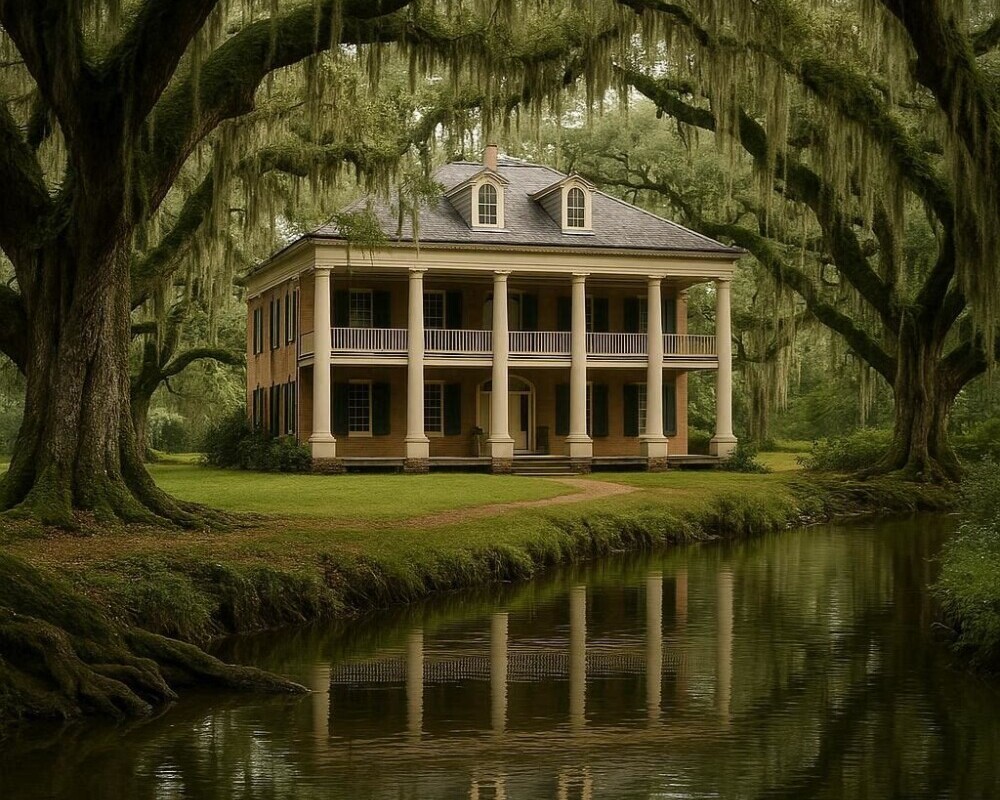
New Orleans’ French Quarter is a vibrant district packed with centuries of history and architectural charm. It stands as the beating heart of the city, where the past meets the present in a remarkable blend. This area might just take you on a journey through time without stepping back too far.
The architectural design reflects a mix of French and Spanish influences, thanks to its colonial past—think wrought-iron balconies that line the streets, pastel-colored buildings with charming courtyards, each adding its unique flair to the neighborhood. Simply strolling down these streets can feel like you’re stepping into a whole different world.
It’s home to some of the city’s most iconic landmarks, such as St. Louis Cathedral—a stunning piece of architecture that overlooks Jackson Square. This square is a lively hub, where street performers and artists create a dynamic scene steeped in artistic culture. Don’t forget Bourbon Street, renowned for its spirited nightlife and rich history.
Digging deeper into the culture, there’s a whole other world waiting in the tales of voodoo practices that still echo through the Quarter. Add to that the soulful sounds of jazz, wafting through the streets, and you’re stepping into a true cultural and historical blend. The Creole cuisine masterpiece is another story in itself, offering tastes that reflect the many influences shaping Louisiana’s rich culinary tradition.
Advice for anyone visiting: take a guided tour if you can. Locals often share insights and stories you won’t find in guidebooks. Engage with street vendors or musicians and perhaps grab a beignet to savor while you explore. It’s all about experiencing the sights, sounds, and flavors coming together in this richly layered historic place.
The Majestic Grandeur of Oak Alley Plantation
Oak Alley Plantation offers a peek into the grandeur and the grimmer realities of the Antebellum South. It’s not just another historical landmark; this place captures a significant part of American history, including the lives that shaped it.
The plantation is known for its iconic oak-lined path, a breathtaking corridor of towering oak trees that stretches over 800 feet. Beyond the beautiful scenery, the architecture of the plantation house stands as a symbol of the era’s craftsmanship. But there’s more to Oak Alley than just its exterior charms.
Exploring the plantation grounds, you can’t ignore the stark contrasts between the grandeur of the “Big House” and the stark living conditions of the enslaved people who once worked here. The narratives shared about these individuals reveal stories of resilience amidst immense hardship. Labrador — the plantation’s narrative space dedicated to their history — provides a crucial perspective that shouldn’t be missed.
For those planning a visit, it’s wise to join a guided tour, where you can listen in on deep dives into personal stories and historical facts about Oak Alley’s past. The guides do an excellent job telling the tales that make this site such a pivotal piece of history.
Beyond history, the plantation sometimes hosts events and workshops that provide hands-on experiences of period crafts, cooking, and cultural practices. Checking the schedule ahead of your visit might allow you to catch something truly special.
Whether you’re a history buff or just someone who appreciates beautiful landscapes adorned with stories from the past, Oak Alley has a way of captivating and educating its visitors. And with every step you take down its walkways, there’s an opportunity to reflect not only on the beauty but also on the harsh realities that formed part of its history.
Echoes of the Past: Baton Rouge’s Capitol Hill
Baton Rouge’s Capitol Hill is a powerhouse of Louisiana’s political history, hosting the monumental Louisiana State Capitol, the tallest capitol building in the United States. The art deco design of this skyscraper offers a visual treat, while the building itself tells powerful stories of political trails blazed here.
A visit to the Old Governor’s Mansion is like stepping into a time machine. Often compared to the White House in style and grandeur, this residence has housed a fascinating array of governors, each contributing to Louisiana’s colorful political tapestry.
The history and influence of notable figures such as Huey Long continue to ripple through the walls of these institutions. His name comes up often, not just for his promotional policies but also for the fervent controversies that surrounded his life and leadership. Imagine ascending to the observation deck of the State Capitol, where Long himself might’ve looked out over Baton Rouge, contemplating his plans for the state.
On-site tours offer engaging insights and anecdotes about landmark legislation passed within those hallowed halls. Don’t miss the chance to learn about significant political events and transformations that have unfolded here, shaping not just the state but resonating on a national level.
When visiting, watch for lesser-known spots like the Capitol Gardens or hidden sculptures that often tell their own unique stories. Touring these places isn’t merely about political history; they present tales of courage, vision, and sometimes scandal that add to Louisiana’s rich legacy.

From Battlefields to Festivals: Preserving the Heritage of Cajun Country
Cajun Country is a vibrant mosaic of culture and history in Louisiana, shaped by the Acadian settlers who arrived here centuries ago. This region offers more than just picturesque bayous and marshlands, it’s a living testament to the rich tapestry of traditions and lifestyle unique to the Cajun way of life.
A visit to the Acadiana Center for the Arts in Lafayette opens a window into the creative spirit of Cajun culture, showcasing local artists and performances that celebrate heritage through music, dance, and visual arts. Another essential stop is Avery Island’s Jungle Gardens where nature and history blend, offering a serene escape punctuated by rich botanical and cultural narratives.
Annual festivals are where Cajun heritage truly shines, with events like the Breaux Bridge Crawfish Festival drawing visitors into a world of music, dance, and of course, food that epitomizes the vibrant spirit of the region. These gatherings aren’t just celebrations; they’re storytelling in their own right through zydeco rhythms and the sizzle of freshly cooked dishes.
For visitors looking to fully experience Cajun culture, exploring the scenic byways and participating in local traditions can enrich understanding beyond typical touristy experiences. Whether it’s through taking a guided swamp tour, engaging with locals, or enjoying a hands-on cooking class in traditional Cajun cuisine, there’s an immersive experience waiting for everyone.

Louisiana reveals itself as a territory of living memory which embodies a facet of its plural history.
Between architectural beauty, political heritage, cultural traditions and stories gone out of the spotlight, this post invites us to explore not only sites, but sensitivities, tensions and celebrations that shape Louisiana’s identity.
How can we visit these places with both wonder and historical awareness, honoring the beauty without forgetting the painful stories that accompany it?
As with much of the history throughout our great country, Louisiana has a deep history. Some of the history of the state is dark and painful. Louisiana has grown up quite a bit since it was first settled and if you go to visit now you will hear and learn about things that should never be forgotten, yet you will also see just how important this place is in the history of our great country. Currently Louisiana is one of the most unique and beautiful places on the planet to visit with a culture unmatched anywhere.